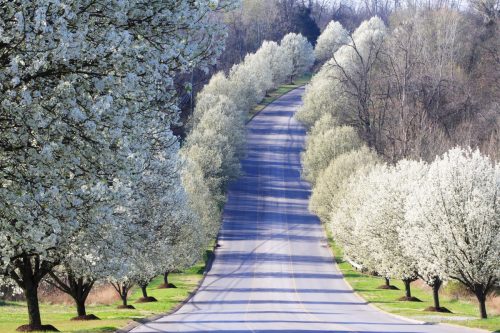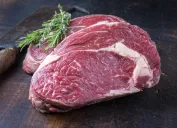If You Have This Tree in Your Yard, Cut It Down Now, Officials Warn
It could pose a threat to surrounding wildlife—as well as your car.

Spring and summer are upon us, with the promise of April showers bringing May flowers. Allergies aside, most of us look forward to the sprouting of tulips and the return of colorful foliage following the bare winter season. Unfortunately, looks can be deceiving, and sometimes even the most beautiful of plant varieties can be a dangerous addition to your garden or yard. Read on to learn more about the tree that experts say you should waste no time in cutting down.
RELATED: If You See a Tree That Looks Like This, Call Officials Immediately.
Invasive plants pose a problem to other plants and animals.

According to the Smithsonian, invasive plants are those that are non-native to the natural U.S. ecosystem and pose a threat to native plants and animals. Invasive plants can take over large areas and make it difficult for native species to compete, as they have not evolved or adapted to growing in different settings and conditions.
Not all non-native plants are a threat, according to James Gagliardi, a horticulturist with Smithsonian Gardens. However, "some imported species are bullies that crowd out native plants and damage the diverse ecosystems that many living things depend on," he says. You'll want to be aware of non-native species in your yard, one of which you may be able to identify by the stinky scent of its blooms.
If you have this tree in your yard, experts say you should cut it down.

One notorious tree variety is the Bradford pear, which is easily identified by its decorative white blooms. But you can't judge a book by its cover in this instance, as the blooms are often accompanied by an unattractive smell, which has been compared to dead fish and urine, USA Today reported. If the smell wasn't bad enough, Bradford pear trees are also dangerous to surrounding wildlife and "choke out other plants," the outlet reported. If you notice this tree growing in your yard, plant experts want you to consider cutting it down.
The trees are notorious for crowding out native plants, according to Better Homes & Gardens, and when they cross with other pear varieties, the offspring (called Callery pears) produce "thorns and thug-like thickets" that can puncture the tire of your car. Strangely enough, these trees have been historically planted as "street trees," or trees that have portions hanging over a public way or near a public way, according to Law Insider. For the immediate future—while Bradford pears are in bloom during the spring—save yourself the hassle of a flat tire, and don't park your car under one.
RELATED: For more advice delivered straight to your inbox, sign up for our daily newsletter.
The trees are now banned in certain U.S. states.

Bradford pear trees are native to China and Vietnam, having been introduced to the U.S. in the 1960s by the United States Department of Agriculture (USDA). The introduction was positive at first, as the trees were both disease-resistant and able to grow in different climates and different soil varieties. "We thought, 'Gee, this is a panacea,'" Mike Dirr, professor of horticulture at the University of Georgia, told NPR. "You can stick it into any planting space in an urban situation, in concrete-heavy soils, clay soils, limestoney soils, acid soils, and it's gonna grow."
However, when Bradford pears started sprouting up all over, crowding out other plants while providing limited food to insects, and simply falling apart due to weak branches, experts learned that the trees were creating a larger problem.
Issues are so severe that some U.S. states have banned the sale and cultivation of Bradford pear trees. According to USA Today, new sales of the tree will be banned in South Carolina (where the tree is most commonly planted) as of Oct. 1, 2024. Pennsylvania enacted a ban on both sale and cultivation, effective Feb. 2024. Nurseries and landscapers in Ohio must phase out the sale of these trees over the next five years, as Bradford pears were placed on the invasive species list in Jan. 2018.
Experts advise trying these methods to get rid of the tree.

The statewide bans do not make it illegal to have these trees in your yard or keep what you already have, according to a Clemson News press release; however, you may want to consider getting rid of your Bradford pear tree, which David Coyle, assistant professor of Forest Health and Invasive Species at Clemson University, compared to a "noxious weed."
As reported by USA Today, experts say the best method to get rid of a Bradford pear is to cut it down. Whether you are taking on the project yourself or enlisting a professional, ensure the stump is removed completely or that herbicide is used to prevent the stump from sprouting new growth. Before you plant a new native tree—Better Homes & Gardens recommends a serviceberry, flowering cherry, or fringetree—also be sure to grind the stump down.
RELATED: Growing This in Your Yard Is Inviting Snakes to Your Home.





















